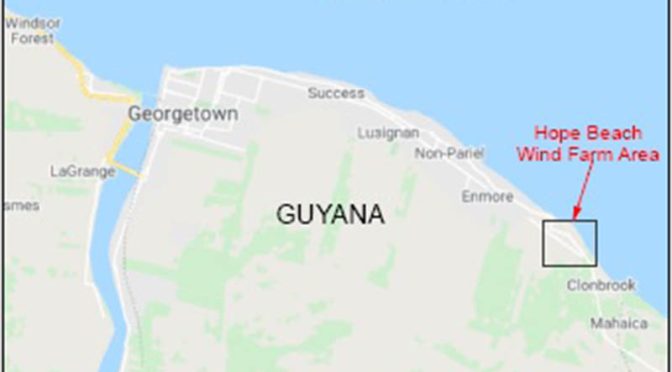Guyana, a small South American country, is well-known for its vast natural resources, including its abundant wind energy potential. The country’s geographical location on the northeastern coast of South America, combined with its flat coastal plains and high average wind speeds, make it an ideal candidate for harnessing the power of wind energy. Despite this potential, Guyana has yet to fully capitalize on this renewable energy source. As the global community continues to emphasize the importance of transitioning to cleaner and more sustainable energy sources, it is essential for Guyana to explore and develop its wind energy potential.
The Guyanese government has recognized the importance of diversifying its energy mix and reducing its reliance on fossil fuels. In recent years, there have been several initiatives aimed at promoting renewable energy in the country. The Low Carbon Development Strategy (LCDS), launched in 2009, is one such initiative that seeks to transform Guyana’s economy while combating climate change. The strategy identifies wind energy as a key component in achieving its goals, with the potential to provide up to 26% of the country’s total energy demand.
In addition to the LCDS, the government has also established the Guyana Energy Agency (GEA), which is responsible for promoting and developing renewable energy technologies in the country. The GEA has conducted several wind resource assessments to determine the feasibility of wind energy projects in various locations across Guyana. These assessments have revealed that the country’s coastal regions possess the most significant wind energy potential, with average wind speeds ranging from 6 to 7 meters per second.
One of the most promising locations for wind energy development in Guyana is the Hope Beach Wind Farm Project. This project, which is currently in the planning stages, aims to install 25 wind turbines with a total capacity of 50 megawatts (MW). Once completed, the Hope Beach Wind Farm is expected to generate approximately 153 gigawatt-hours (GWh) of electricity annually, enough to power over 50,000 homes. This project would not only contribute to Guyana’s renewable energy goals but also help to reduce the country’s dependence on imported fossil fuels, which currently account for over 90% of its energy supply.
Despite the clear potential for wind energy in Guyana, there are several challenges that must be addressed to ensure its successful development. One of the primary concerns is the lack of a comprehensive regulatory framework for renewable energy projects. The government has been working to develop a national renewable energy policy and a feed-in tariff system to incentivize investment in renewable energy projects. However, these initiatives have yet to be fully implemented, which has hindered the growth of the wind energy sector.
Another challenge is the need for significant investment in the country’s transmission and distribution infrastructure. The existing electrical grid is outdated and inefficient, which could limit the integration of large-scale wind energy projects. Upgrading the grid will be essential to accommodate the increased generation capacity from renewable energy sources.
In conclusion, Guyana possesses immense wind energy potential that, if harnessed effectively, could play a significant role in the country’s transition to a more sustainable and diversified energy mix. The government’s commitment to promoting renewable energy through initiatives such as the LCDS and the establishment of the GEA is a positive step towards realizing this potential. However, addressing the challenges of regulatory framework development and grid infrastructure improvements will be crucial to ensure the successful growth of the wind energy sector in Guyana. As the global community continues to prioritize clean energy solutions, it is essential for Guyana to seize this opportunity and fully embrace its untapped wind energy potential.


